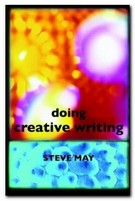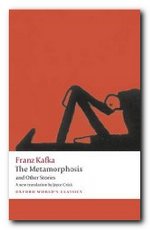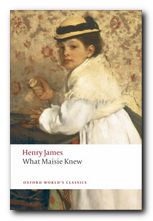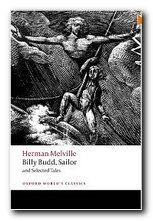a guide for undergraduate and postgraduate students
Can creative writing actually be taught? Well – judging from the number of college and university courses devoted to the subject, and the number of books written about it, the answer appears to be ‘Why not?’ Steve May teaches at Bath Spa University , and Doing Creative Writing is an attempt to support students whilst they choose a suitable course, what to expect when they embark on it, how to organise themselves as writers, and what possibilities exist for a writer once the course has finished.
 Apart from having the desire to write, not many students know what is involved in the process. His first two chapters argue the case for teaching creative writing against the advice of such lofty figures as Henry James, who believed that it could not be taught.
Apart from having the desire to write, not many students know what is involved in the process. His first two chapters argue the case for teaching creative writing against the advice of such lofty figures as Henry James, who believed that it could not be taught.
He uses music as an analogy: nobody would expect to pick up a clarinet (as they might a pen) and perform a Mozart concerto without learning how to play the instrument first.
The next section will be of vital interest to anyone planning to study creative writing in higher education. He looks at the way it is taught in the US and the UK; he explains the variety of reasons why such courses are offered; and he provides guidance for judging the calibre of the people teaching the subject. Not many people realise that some of the best ‘qualified’ (published writers) might well be employed on a part-time basis and paid at hourly rates.
When you’ve enrolled on your course, what can you expect to happen? You’ll have to get used to the idea of the seminar or workshop in which you’ll be expected to present your own work and have it discussed by fellow students. He gives advice on how to handle the feedback you will be given – and how to give your own when you in your turn become ‘the audience’.
He tackles head-on the often vexed issue of assessment in creative work. Be warned! These workshops might form part of your assessment – so don’t think these sessions are an easy option where you can sit back and just listen. He shows real-life examples of the criteria UK and US institutions use, and he emphasises the element of self-assessment or reflective writing which is common to both.
The last part of the book is dedicated to the techniques of creative writing – where to write, how to write, what to write about, what materials to use, and how to present the finished work.
He also includes some real-life case studies of students who have taken creative writing courses and the variety of paths their careers have taken; and finally there’s a useful bunch of recommendations for further reading.
This is a useful adjunct to books which focus on the techniques of creative writing (such as Ailsa Cox’s recent Writing Short Stories) and it’s obviously aimed at students with ambitions in creative writing course who may not know which course to choose – or what to expect when they get there.
© Roy Johnson 2007
Steve May, Doing Creative Writing, London: Routledge, 2007, pp.152, ISBN: 0415402392
More on creative writing
More on writing skills
More on publishing





 The Bostonians (1886) is a novel about the early feminist movement. The heroine Verena Tarrant is an ‘inspirational speaker’ who is taken under the wing of Olive Chancellor, a man-hating suffragette and radical feminist. Trying to pull her in the opposite direction is Basil Ransom, a vigorous young man to whom Verena becomes more and more attracted. The dramatic contest to possess her is played out with some witty and often rather sardonic touches, and as usual James keeps the reader guessing about the outcome until the very last page.
The Bostonians (1886) is a novel about the early feminist movement. The heroine Verena Tarrant is an ‘inspirational speaker’ who is taken under the wing of Olive Chancellor, a man-hating suffragette and radical feminist. Trying to pull her in the opposite direction is Basil Ransom, a vigorous young man to whom Verena becomes more and more attracted. The dramatic contest to possess her is played out with some witty and often rather sardonic touches, and as usual James keeps the reader guessing about the outcome until the very last page. What Masie Knew (1897) A young girl is caught between parents who are in the middle of personal conflict, adultery, and divorce. Can she survive without becoming corrupted? It’s touch and go – and not made easier for the reader by the attentions of an older man who decides to ‘look after’ her. This comes from the beginning of James’s ‘Late Phase’, so be prepared for longer and longer sentences. In fact it’s said that whilst composing this novel, James switched from writing longhand to using dictation – and it shows if you look carefully enough – part way through the book.
What Masie Knew (1897) A young girl is caught between parents who are in the middle of personal conflict, adultery, and divorce. Can she survive without becoming corrupted? It’s touch and go – and not made easier for the reader by the attentions of an older man who decides to ‘look after’ her. This comes from the beginning of James’s ‘Late Phase’, so be prepared for longer and longer sentences. In fact it’s said that whilst composing this novel, James switched from writing longhand to using dictation – and it shows if you look carefully enough – part way through the book.


